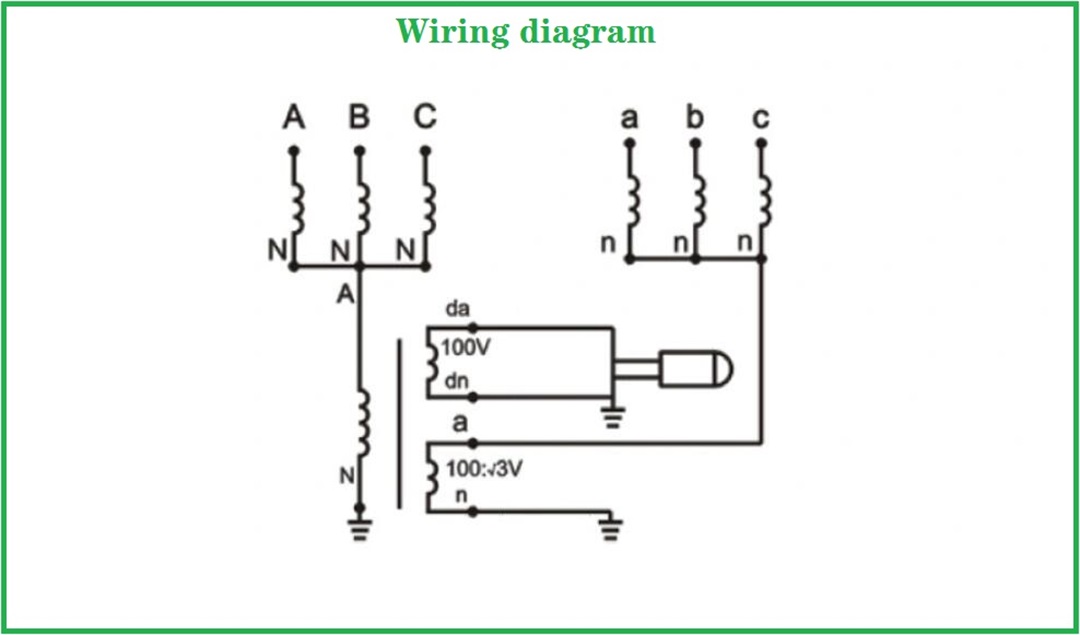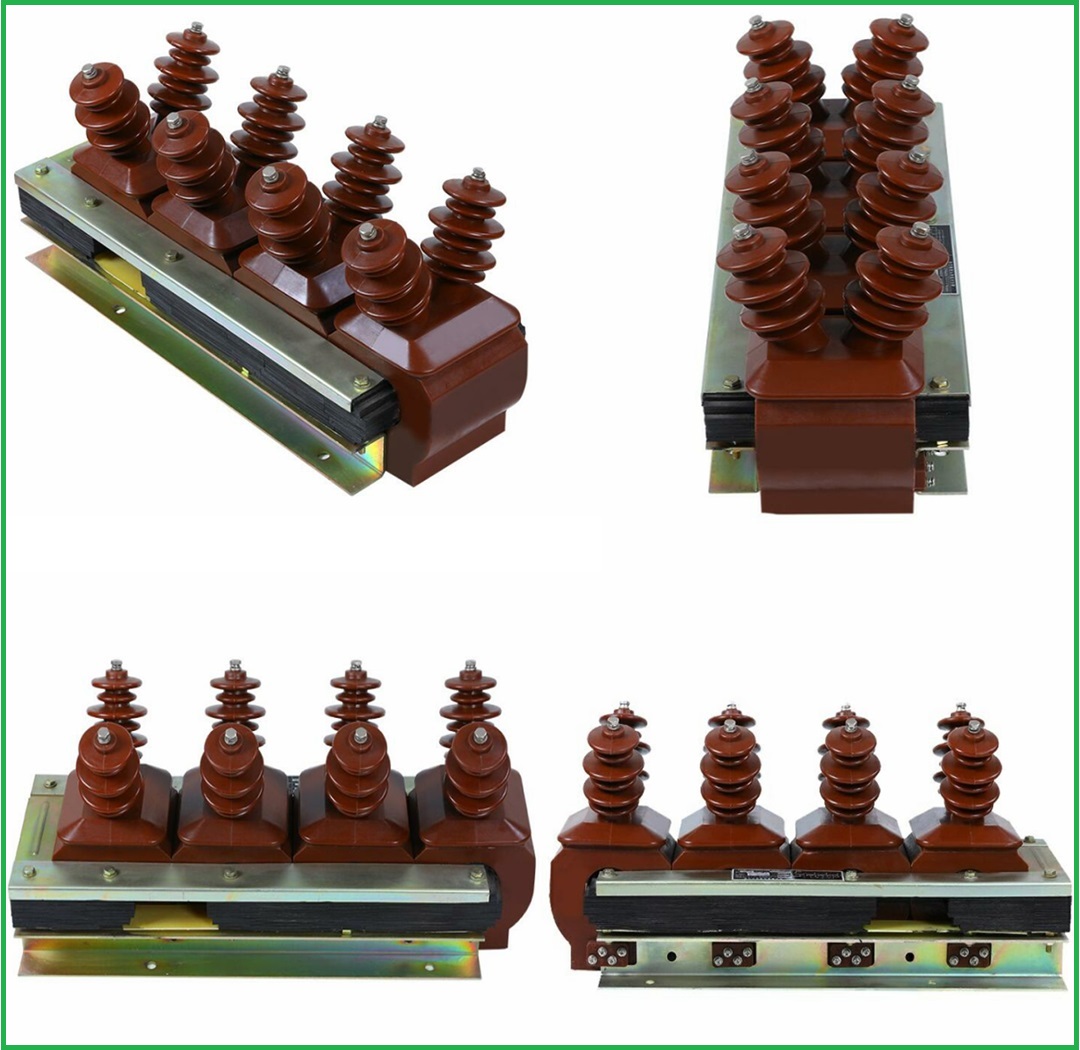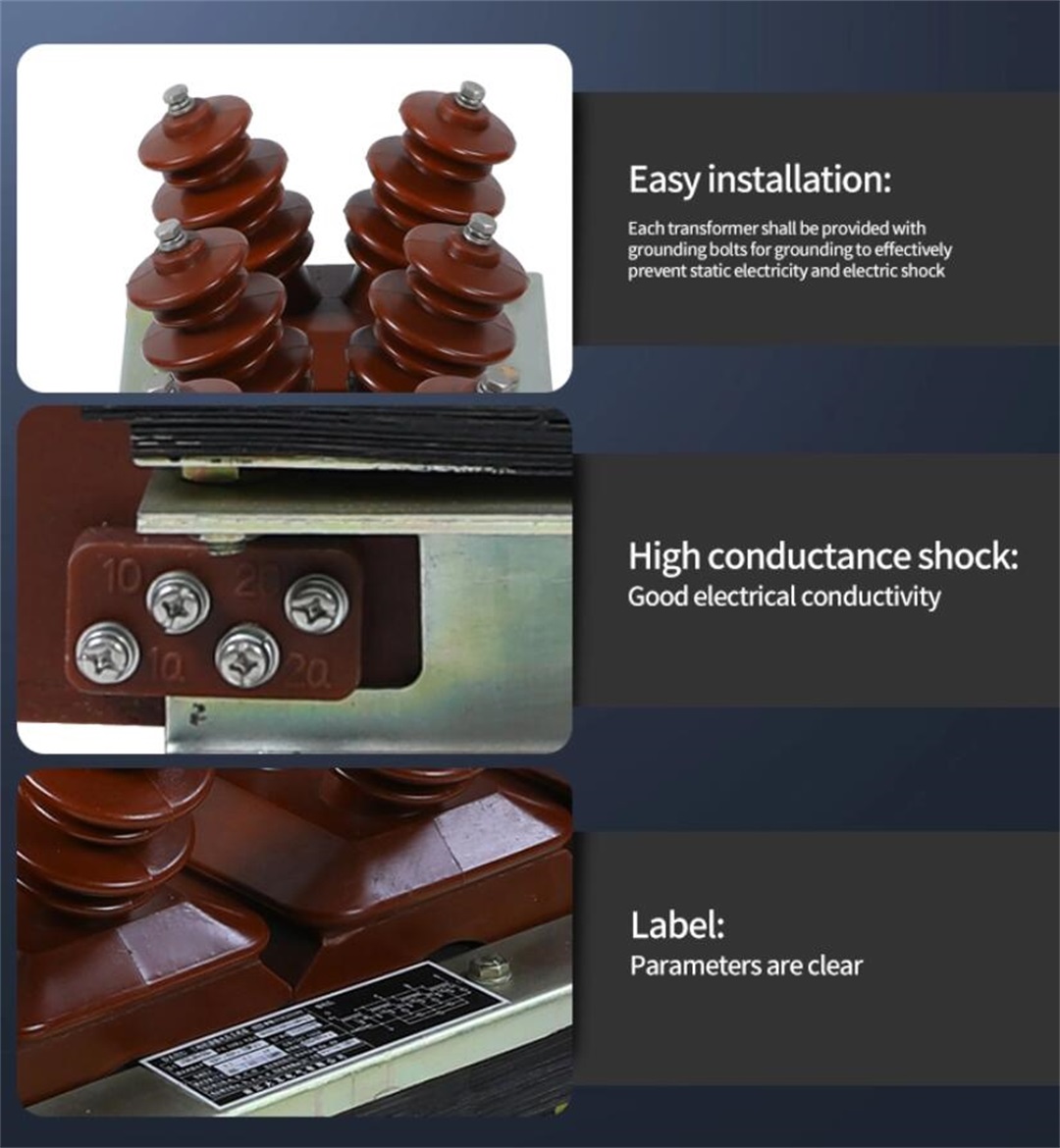
 ●Rated insulation 11.5/42/75KV ●Rated frequency 50HZ ●Ambient temperature -5ºC - +40ºC ●The power factor of the load COSΦ=0.8 (lag); ●Altitude is less than or equal to 1000m, which meets Class II pollution level; ●Product performance meets the standard: GB1207-1997 (voltage transformer)
●Rated insulation 11.5/42/75KV ●Rated frequency 50HZ ●Ambient temperature -5ºC - +40ºC ●The power factor of the load COSΦ=0.8 (lag); ●Altitude is less than or equal to 1000m, which meets Class II pollution level; ●Product performance meets the standard: GB1207-1997 (voltage transformer) 


 1. JSZJK-10Q voltage transformer is an indoor epoxy resin full vacuum casting structure. Its surface creepage distance is greater than 25.m/kV 2. When the JSZK1-10 and JSZK1-10F voltage transformers are used in the system, each of them has four casting bodies, and the inner part is three voltage casting bodies, which are sleeved on the three-phase core column, and the anti-resonance part is installed in another port. On the iron core, during normal operation, the neutral point-to-ground voltage is zero volts, and the secondary output voltage of the anti-resonance part is zero volts, and one is short -circuited to ground. The secondary side (da-dn) of the anti-resonance part generates a voltage of 100V, which drives the relay to act, and the neutral point of the power supply is cut off. Harmonic elimination measures are adopted, so that the product does not need additional protection methods such as harmonic elimination or damping grounding, that is, it can be safely It can operate on the power grid and can operate in a single-phase grounded fault line for a long time. environmental conditions: 1. The altitude does not exceed 1000m; 2. The ambient temperature is not higher than +40c, not lower than -5 ℃; 3. The relative humidity of the surrounding air is not more than 85% (20c); 4. There is no corrosive gas in the installation site
1. JSZJK-10Q voltage transformer is an indoor epoxy resin full vacuum casting structure. Its surface creepage distance is greater than 25.m/kV 2. When the JSZK1-10 and JSZK1-10F voltage transformers are used in the system, each of them has four casting bodies, and the inner part is three voltage casting bodies, which are sleeved on the three-phase core column, and the anti-resonance part is installed in another port. On the iron core, during normal operation, the neutral point-to-ground voltage is zero volts, and the secondary output voltage of the anti-resonance part is zero volts, and one is short -circuited to ground. The secondary side (da-dn) of the anti-resonance part generates a voltage of 100V, which drives the relay to act, and the neutral point of the power supply is cut off. Harmonic elimination measures are adopted, so that the product does not need additional protection methods such as harmonic elimination or damping grounding, that is, it can be safely It can operate on the power grid and can operate in a single-phase grounded fault line for a long time. environmental conditions: 1. The altitude does not exceed 1000m; 2. The ambient temperature is not higher than +40c, not lower than -5 ℃; 3. The relative humidity of the surrounding air is not more than 85% (20c); 4. There is no corrosive gas in the installation site






 Order plan: 1. Provide wiring scheme diagram number, purpose and single-line system diagram, rated voltage, rated current, etc. 2. Requirements for switchgear control, measurement and protection functions and other locking and automatic devices 3. When the switchgear is used in special environmental conditions, it should be explained in detail when ordering 4. When other or more accessories and spare parts are needed, the type and quantity should be proposed Precautions: 1. Before the voltage transformer is put into operation, the test and inspection shall be carried out according to the items specified in the regulations. For example, measuring polarity, connection group, shaking insulation, nuclear phase sequence, etc. 2. The wiring of the voltage transformer should ensure its correctness. The primary winding should be connected in parallel with the circuit under test, and the secondary winding should be connected in parallel with the voltage coil of the connected measuring instrument, relay protection device or automatic device. At the same time, attention should be paid to the correctness of the polarity. . 3. The capacity of the load connected to the secondary side of the voltage transformer should be appropriate, and the load connected to the secondary side of the voltage transformer should not exceed its rated capacity, otherwise, the error of the transformer will increase, and it is difficult to achieve the correctness of the measurement. 4. No short circuit is allowed on the secondary side of the voltage transformer. Since the internal impedance of the voltage transformer is very small, if the secondary circuit is short-circuited, a large current will appear, which will damage the secondary equipment and even endanger personal safety. The voltage transformer can be equipped with a fuse on the secondary side to protect itself from being damaged by a short circuit on the secondary side. If possible, a fuse should also be installed on the primary side to protect the high -voltage power grid from endangering the safety of the primary system due to the failure of the high-voltage winding or lead of the transformer. 5. In order to ensure the safety of people when touching measuring instruments and relays, the secondary winding of the voltage transformer must be grounded at one point. Because after grounding, when the insulation between the primary and secondary windings is damaged, it can prevent the high voltage of the instrument and the relay from endangering personal safety. 6. Short circuit is absolutely not allowed on the secondary side of the voltage transformer
Order plan: 1. Provide wiring scheme diagram number, purpose and single-line system diagram, rated voltage, rated current, etc. 2. Requirements for switchgear control, measurement and protection functions and other locking and automatic devices 3. When the switchgear is used in special environmental conditions, it should be explained in detail when ordering 4. When other or more accessories and spare parts are needed, the type and quantity should be proposed Precautions: 1. Before the voltage transformer is put into operation, the test and inspection shall be carried out according to the items specified in the regulations. For example, measuring polarity, connection group, shaking insulation, nuclear phase sequence, etc. 2. The wiring of the voltage transformer should ensure its correctness. The primary winding should be connected in parallel with the circuit under test, and the secondary winding should be connected in parallel with the voltage coil of the connected measuring instrument, relay protection device or automatic device. At the same time, attention should be paid to the correctness of the polarity. . 3. The capacity of the load connected to the secondary side of the voltage transformer should be appropriate, and the load connected to the secondary side of the voltage transformer should not exceed its rated capacity, otherwise, the error of the transformer will increase, and it is difficult to achieve the correctness of the measurement. 4. No short circuit is allowed on the secondary side of the voltage transformer. Since the internal impedance of the voltage transformer is very small, if the secondary circuit is short-circuited, a large current will appear, which will damage the secondary equipment and even endanger personal safety. The voltage transformer can be equipped with a fuse on the secondary side to protect itself from being damaged by a short circuit on the secondary side. If possible, a fuse should also be installed on the primary side to protect the high -voltage power grid from endangering the safety of the primary system due to the failure of the high-voltage winding or lead of the transformer. 5. In order to ensure the safety of people when touching measuring instruments and relays, the secondary winding of the voltage transformer must be grounded at one point. Because after grounding, when the insulation between the primary and secondary windings is damaged, it can prevent the high voltage of the instrument and the relay from endangering personal safety. 6. Short circuit is absolutely not allowed on the secondary side of the voltage transformer 